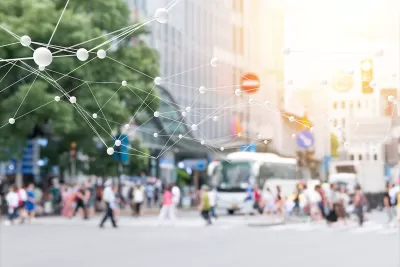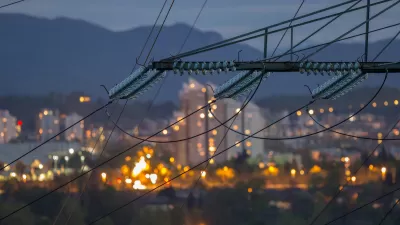Explore financial cybersecurity in smart cities, addressing urban vulnerabilities and strategies for protection.

As cities become increasingly digitally connected, their financial infrastructures become prime targets for cyber attacks. Smart city technology oversees many critical operations, all of which are enticing to malicious actors. With everything interconnected, a successful attack in one area can have a rippling effect on other areas. Ensuring robust cybersecurity in smart cities has never been more paramount.
Potential risks and vulnerabilities in smart cities
The rapid proliferation of IoT devices in highly connected urban environments creates a larger attack surface. As systems find more ways to communicate across an entire city, there are more potential entry points for cybercriminals to exploit.
Financial risks
A breach in one system exposes data from other points. For example, hackers accessing a food delivery IoT sensor network could obtain lateral access to money transfer systems if they are interconnected.
Smart cities rely on a constant flow of rich data, including sensitive financial information like account details, payment histories, billing addresses, and more. Threat actors can exploit vulnerabilities in the infrastructure to steal confidential data.
The resulting loss can be catastrophic. IBM estimates the average cost of a data breach at over $4.4 million in 2023. However, that’s only at the organizational level. The magnitude of financial loss on a city-wide scale will undoubtedly be higher.
Attack vectors
Criminals can launch attacks on smart city infrastructure in several ways. Ransomware is the primary concern, as the interconnected network means a single attack may impact an unlimited number of systems.
For example, if a hacker accessed the city’s smart grid, it could result in power outages, which would impact critical facilities such as health care and emergency services. As a result, cities are more likely to pay a ransom. Average ransom demands in 2022 reached over $7.2 million and will likely be higher in subsequent years.
Phishing is another huge issue. Smart city citizens could click on unsuspecting links, providing cybercriminals an entry point for attacks.
There’s also an increased risk of third-party attacks. Cities often work with external vendors to assist in implementing new technology. However, this can create potential vulnerabilities in the network if these third parties do not practice proper cybersecurity hygiene.
How can these risks be mitigated?
Securing financial transactions and sensitive data in smart cities requires a 360° approach to prevent breaches. This involves safeguarding the citizen-facing end and the internal processes related to vendors and systems. At the very least, smart city infrastructure must include the following cybersecurity measures.
Encryption
Data encryption in transit and at rest ensures that even if unauthorized individuals gain access, they cannot decipher the information without the designated key.
Multi-factor authentication
MFA requires users to provide two or more forms of authentication — fingerprints, iris scans, one-time passwords — for an extra layer of security against potential attacks.
Blockchain technology
The decentralized nature of the blockchain means the network is not controlled by a single entity, making it resistant to single points of vulnerability. Additionally, blockchains utilize immutable ledgers, so data recorded on them cannot be altered or deleted, ensuring the integrity of financial transactions.
AI and machine learning
Smart cities can leverage AI-powered systems to analyze transaction patterns and detect anomalies that may indicate cyber risk. Advanced machine learning models can also be configured to predict potential security threats and automatically implement mitigation measures.
Awareness training
Human error represents a major vulnerability in smart city infrastructure. Residents need regular training on cybersecurity awareness and best practices. For instance, they can learn to identify the usual signs of phishing, such as generic greetings and typo-ridden messages.
Incorporate cybersecurity into the planning process
The United States is expected to invest $41 trillion to upgrade smart city infrastructure over the next 20 years. A sizable chunk of this budget must be allotted to cybersecurity for financial ecosystems.
Moreover, government leaders, urban planners, and other key stakeholders must make security principles integral to smart city governance. Well-defined cross-sector collaboration can minimize a significant cybersecurity incident's likelihood and financial impact.
Implement Financial Cybersecurity in Smart Cities
The reliability and trustworthiness of a smart city stand or fall with the ability to safeguard financial infrastructures from hackers. Stakeholders must employ a multifaceted approach to secure sensitive data, leveraging blockchain technology, AI systems, encryption, and other advanced technologies to realize the benefits of interconnected urban environments.

Maui's Vacation Rental Debate Turns Ugly
Verbal attacks, misinformation campaigns and fistfights plague a high-stakes debate to convert thousands of vacation rentals into long-term housing.

Planetizen Federal Action Tracker
A weekly monitor of how Trump’s orders and actions are impacting planners and planning in America.

San Francisco Suspends Traffic Calming Amidst Record Deaths
Citing “a challenging fiscal landscape,” the city will cease the program on the heels of 42 traffic deaths, including 24 pedestrians.

Defunct Pittsburgh Power Plant to Become Residential Tower
A decommissioned steam heat plant will be redeveloped into almost 100 affordable housing units.

Trump Prompts Restructuring of Transportation Research Board in “Unprecedented Overreach”
The TRB has eliminated more than half of its committees including those focused on climate, equity, and cities.

Amtrak Rolls Out New Orleans to Alabama “Mardi Gras” Train
The new service will operate morning and evening departures between Mobile and New Orleans.
Urban Design for Planners 1: Software Tools
This six-course series explores essential urban design concepts using open source software and equips planners with the tools they need to participate fully in the urban design process.
Planning for Universal Design
Learn the tools for implementing Universal Design in planning regulations.
Heyer Gruel & Associates PA
JM Goldson LLC
Custer County Colorado
City of Camden Redevelopment Agency
City of Astoria
Transportation Research & Education Center (TREC) at Portland State University
Jefferson Parish Government
Camden Redevelopment Agency
City of Claremont






























